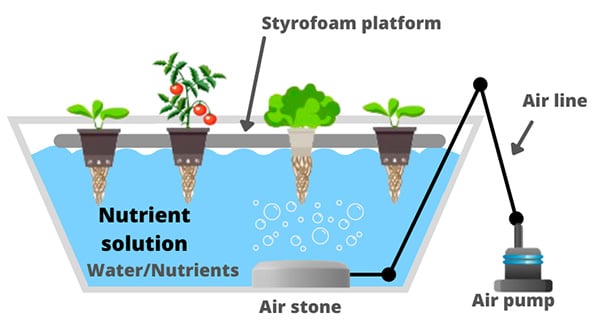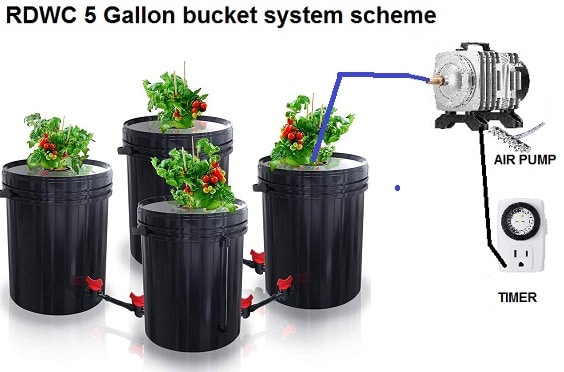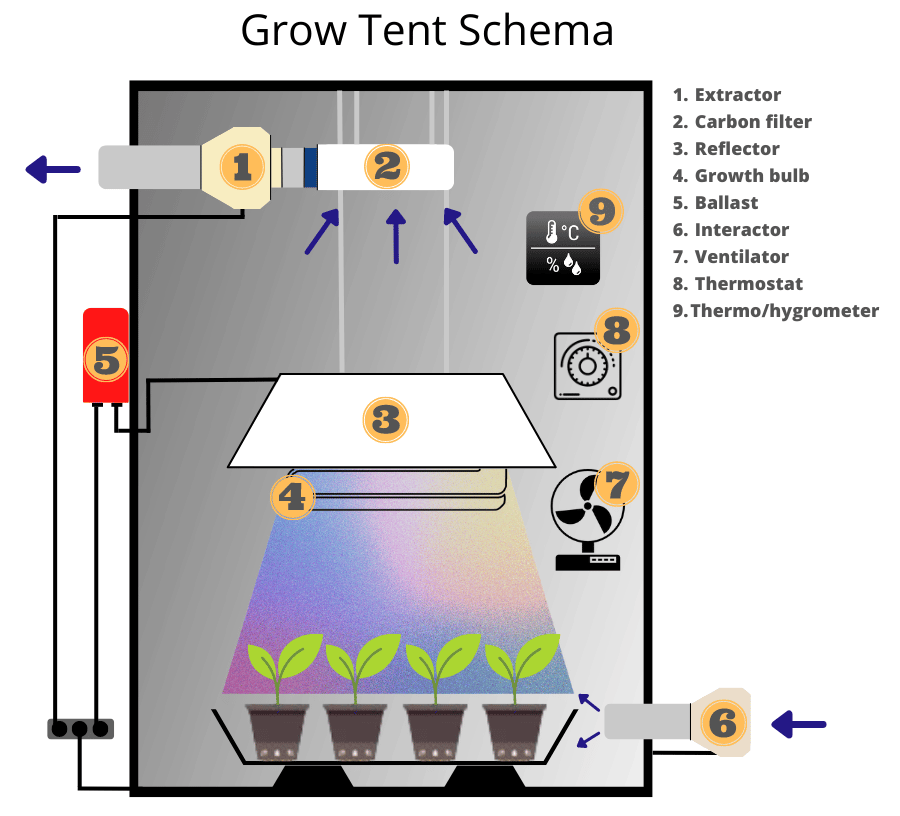If you’re new to hydroponics and unfamiliar with terms like deep water culture, don’t worry, it’s simpler than it sounds! DWC is a hydroponic growing method that involves suspending plant roots in a nutrient-rich solution.
While there are other types of hydroponic systems like nutrient film technique and ebb and flow, we’ll focus on DWC in this article. We’ll cover everything you need to know about DWC systems, including the different types and how to build your own. So, let’s get started!
 Before you start growing hydroponics herbs, veggies, and leafy greens, you’ll need to pick the right system to start with. Here are our suggestions: Our Picks for the 5 Hydroponic Towers, Picks for the 5 Best Aeroponics Systems with Buyer’s Guides and Our Picks for the 5 Grow Tent Kits with Buyer’s Guides.
Before you start growing hydroponics herbs, veggies, and leafy greens, you’ll need to pick the right system to start with. Here are our suggestions: Our Picks for the 5 Hydroponic Towers, Picks for the 5 Best Aeroponics Systems with Buyer’s Guides and Our Picks for the 5 Grow Tent Kits with Buyer’s Guides.
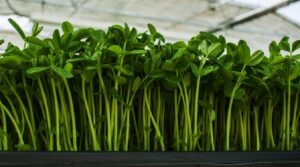
What Is a DWC Hydroponics System?
In a DWC system, plants’ roots are submerged in a solution that contains suitable levels of oxygen and special nutrients. This helps the plants grow at least 15% faster and be healthier.
The solution contains the three most important ingredient types:
- Water.
The base of the solution is water. The roots are always moisturized, so you don’t need to water plants. - Oxygen.
The soil has pockets of air in it, while water doesn’t. To make sure your plants get enough oxygen, it’s supplied directly into the water through an airstone and a pump. - Nutrients.
A full portion of micro and macronutrients depends on the plant you want to grow. We’ll talk about it more nearing the end of the article.
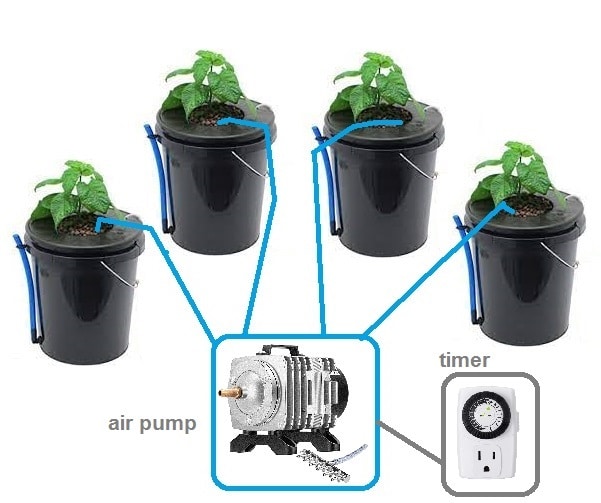
The method is very beneficial since it doesn’t need too much maintenance and constant monitoring. The roots are well-fed and “ventilated,” they are in water, so the need for more humidity is absent. So, the largest part of your job is to assemble the system and follow proper nutrient ratios.
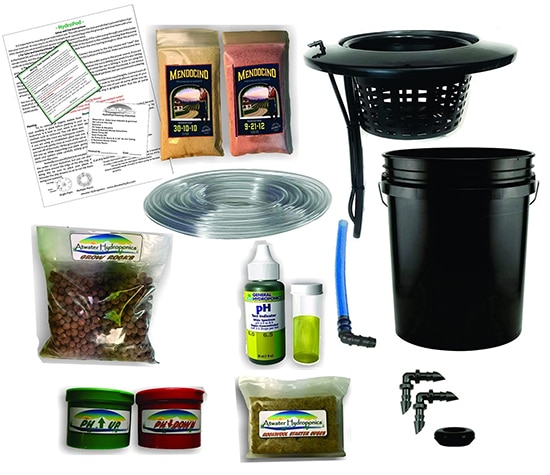 The Atwater HydroPod - Standard A/C Powered DWC/Recirculating Drip Hydroponic Garden System Kit
The Atwater HydroPod - Standard A/C Powered DWC/Recirculating Drip Hydroponic Garden System Kit
- Most efficient use of water compared to traditional gardening
- Dual outlet air pump, Nutrients are Included!
- Kit contains everything you need to start your own garden (minus plants and water!)
Why “deep water” culture? Because the roots are fully submerged in a considerable amount of water. A lot of other hydroponics methods involve partial submerging.
Pros and Cons of Hydroponics Deep Water Culture (DWC Hydroponics)
Let’s see all the advantages and disadvantages of such a system.
Pros:
- This is one of the easiest methods a lot of beginners use when getting familiar with hydroponics;
- Minimal maintenance required after you finish planting;
- Faster growth than in soil (you can grow lettuce 50% faster, for example);
- Easy installation due to the minimal number of small moving details.
There are cons as well, but we should warn you that they are all avoidable if you’re maintaining the system and the surroundings.
Cons:
- If you’re working on a small scale, it’s very easy to choose poor ratios of nutrients and other factors;
- Also, for small scale, water and pH levels, as well as nutrient concentration, may change rapidly and dramatically;
- If the air pump fails, the plants will die due to the lack of oxygen;
- Water temperature might be difficult to keep at the needed level.
Deep Water Culture System Diagram (DWC)
The deep water culture system involves exposing the roots of lettuce plants to a constant flow of nutrient-rich water, which promotes quick growth and efficient nutrient absorption. This hydroponic system is also low-maintenance and simple to set up, making it suitable for small-scale gardens.
Img: Deep Water Culture System Schema
DWC Hydroponics for Beginners: The Easiest Method
If you’re a beginner, it’s worth finding out more about the easiest type of DWC – the traditional method. Such a system is the easiest to assemble and requires the following:
- A 5-gallon bucket;
- Airstone and pump;
- Tubing for air;
- Growing media and nutrients for hydroponics;
- PPM meter;
- Net pots for plants;
- pH control.
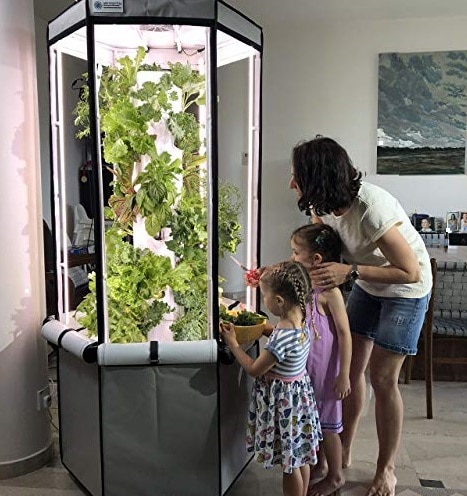
 Aerospring 27-Plant Vertical Hydroponics Indoor Growing System
Aerospring 27-Plant Vertical Hydroponics Indoor Growing System
- Easy to use aeroponic system for your home
- Fan - Grow Lettuce, Herbs, Veggies & Fruits
- Grow smart & eat healthy, 20 gallon water reservoir Grow Tent, LED Grow Lights
All you have to do to build the system is:
- Connect the air tubing to the pump and the stone;
- Put the air stone in your 5-gallon bucket;
- Pour water, add pH control and a proper nutrient ratio;
- Start the seeds.
As the seeds start to germinate, sooner or later, their roots will contact the water. From that point, you can have a rest and see how rapidly your plants grow! Such an acceleration is achieved by focusing the roots on nurturing themselves rather than looking for water and “food” in the soil.
If this method seems too easy for you, maybe it’s time to proceed to a more complicated type, which is the recirculating DWC system.
How to Build a Recirculating Deep Water Culture System

The next system by complexity is the RDWC or recirculating deep water culture system. It’s suitable for larger scales like 5 buckets or more. When using the traditional method, you will have to calibrate every bucket, which might be complicated. If all the buckets are for a single type of plant, you can build a system that will circulate the nutrients. One reservoir will feed all the plants.
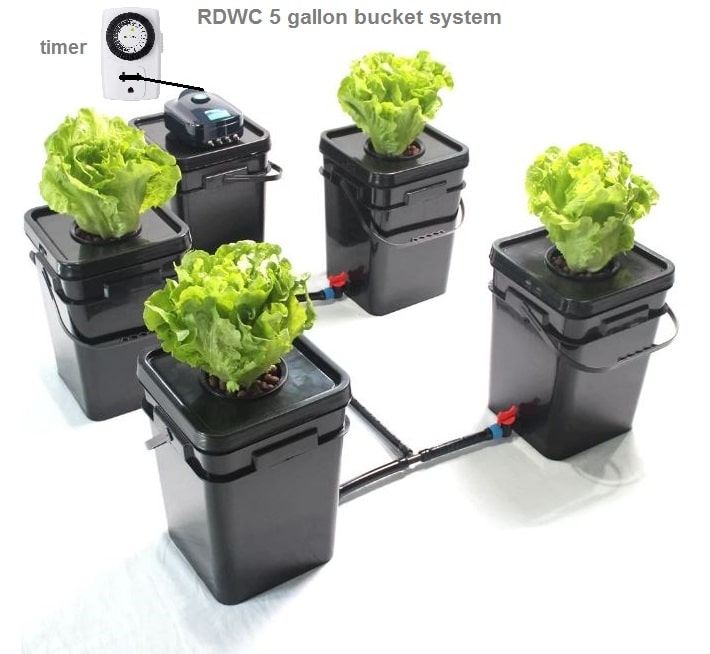
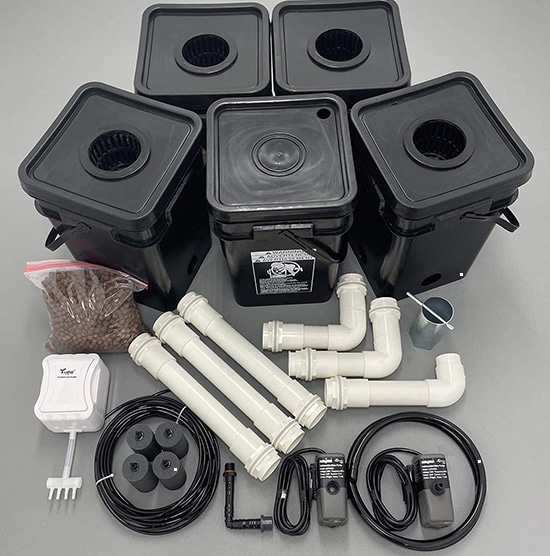 Recirculating Deep Water Culture (RDWC) Hydroponic Grow Kit System
Recirculating Deep Water Culture (RDWC) Hydroponic Grow Kit System
- Reservoir Bucket Connected to 4 Grow Buckets
- 400 Gallon/hour Circulating Pump
- Large 5 gallon square buckets, pre-drilled
The air will also circulate as the water with the solution will be oxygenated with spray nozzles.
We’ll guide you through the building of such a system. It’s only 5 steps.
Also, I can recommend this article to read about How to Set Up Hydroponic Drip Systems.
What You Need to Build a Recirculating Deep Water Culture System
Basically, you will need:
- A large reservoir for the solution that will feed the buckets;
- Pots for your plants;
- Buckets to put the pots in (optional);
- Tubes for recirculating;
- Nutrients;
- pH control kit;
- Growing medium (optional);
- Air system.
Step 1: Choosing and Installing the Main Container
The main container is the most important thing for the whole system. Determine how many plants you will have to grow and choose a reservoir of a necessary volume. We recommend getting one that can be filled with around 15 l of water.
See if your plants are entitled to sunlight and choose a regular or a black, light-absorbing container, accordingly. If you have several types of plants that will need the same ratio of oxygen and nutrients, you can grow all of them at once in one system, which is quite convenient.
If you’re a beginner, we recommend choosing one type of plant and only a couple of additional pots. All you will have to do will be adding the solution to the main bucket when needed. As it’s linked to all the smaller pots, the solution will circulate freely, feeding all the plants at once.
Place the plant in the reservoir to have additional space and have more units as a result. As you learn how to build a simple system, the next one can be bigger, and gradually, you’ll move to a more professional phase where over 10-20 pots will grow plants at the same time!
Step 2: Choosing Pots
Depending on what you grow, choose pots of the necessary size. The best type is net pots, but they may be difficult to find. A lot of people choose to make their own DIY pots, which can save money and become a fun and useful experience.
If you’re sure the holes won’t have sharp edges and will be of a necessary size, go for it. However, remember that any sharp part can damage the roots and kill the plant. The roots grow very tender in such DWC systems, so they require a suitable environment without any danger.
Choose the pots/buckets, connect them with tubes to the main reservoir so that the solution from it can flow to every bucket, and nurture every root. Make sure there’s enough solution both for the buckets and the tubes it will be circulating through.
Step 3: Measuring the Ratio of Nutrients and Additional Elements
The main drawback of such systems for outside use is the limit of temperature the plants will grow in. Make sure your system is covered and protected from too hot or too cold temperatures. The room temperature is fine.
As to the nutrients, choose a brand you can rely on. For that, go online and read reviews of other people. This is very beneficial for those who have little to no experience in hydroponics since you can skip the trial and error part and buy nutrients suitable for your greens. The ratio should be mentioned in the manual for the nutrients, and you have to follow it strictly. Such systems are quite fragile when it comes to wrong calculations.
The situation with pH is the same. Usually, the level of 5,8 is OK, but you have to learn more about the plants you’re about to grow. Some might require more or less. For more guidance, refer to the manual for the pH control kit of your choice.
One full reservoir should drain fully in 1-2 weeks for maintenance work. However, if you invest in the EC/PPM meter, you can check the condition of the solution without having to wait for the water to drain.
Step 4: Installing an Aeration System
An air pump should have the capacity to process twice as much water as there will be in the main reservoir. So, if you have a 15-liter container, choose a system capable of processing 30 liters per hour.
The air system will oxygenate the water that will, later on, be circulated through the buckets with pots, offering even oxygen for all plants. No DWC system will work properly if you don’t aerate the water. It has to be rich in oxygen so that the roots can breathe. In soil, they do it using pockets of air, but in the water, there are none.
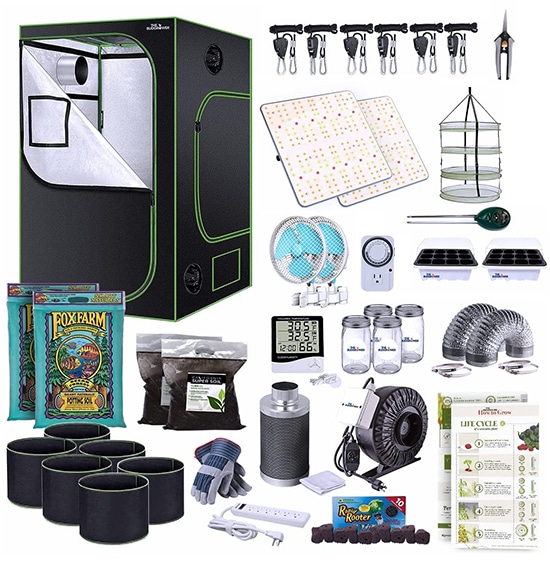 TheBudGrower Complete All-in-One Home Grow Solution 4x4x7ft- 2200W(2)
TheBudGrower Complete All-in-One Home Grow Solution 4x4x7ft- 2200W(2)
- LED lights specialty manufactured by VIVOSUN with Samsung LM301 diodes for FULL spectrum light
- The industries most durable grow tent – heavy duty 1680d oxford cloth
- Money & energy saving complete home grow tent kit
Step 5: Plant the Seeds and Wait
Put the seeds in the growing media and in the pots. Take care of them according to the instructions on the seed package. As soon as the tiny young roots touch highly nutritious water, you’ll see an explosion of rapid growth!
What Is the Best Recirculating DWC System
There’s no absolute best recirculating DWC system. You have to choose one depending on your needs and budget. There are DIY systems made using elements you have at home and some additional solutions for proper pH and nutrition that are as good as purchased whole systems.
Determine your priorities:
- Your budget;
- Type of plant;
- Volume;
- Number of pots needed;
- Quality;
- Urgency.
Combine the most important criteria, and you’ll see several suitable options to choose from. We highly recommend making quality one of the top criteria. Suiting your budget is always a good thing, but buying a low-quality DWC system that won’t give the desired results will lead to a waste of money.
Where to Find the Best DWC System
You can find a DWC system of any complexity in physical shops and online. There are pros and cons to every type of store, so you should choose depending on what’s more convenient for you.
Physical shops pros:
- You can see the items right away;
- There’s no need to wait for the delivery;
- You can get a consultation on-site by a professional (optional).
Physical shops cons:
- The prices are usually higher than those of online shops;
- The range of models might be limited.
Online shops pros:
- The range is quite impressive;
- The range of shops is also wide, and they may be more specialized in a certain type of deep water culture system;
- The prices are often lower than those of brick-and-mortar stores;
- You can get a delivery to the door;
- Online shops usually aren’t limited in service during quarantine so you can make a purchase anytime.
Online shops cons:
- Not all shops have immediate customer service available for consultation;
- You have to be sure the shop is legit;
- You’ll have to wait for some time for the delivery.
Online shopping is gaining more and more popularity nowadays. It’s relatively easy to find what you need because there are lots of reviews of certain models online. You can chat with people who have already bought the DWC system you’re interested in and get the best one for your needs.
Extra Information About Deep Water Culture
The world of hydroponics is vast, and we’ve just scratched the surface. To whet your appetite a bit more, let’s review some of the other popular topics.
DWC Hydroponic Bucket System: One Bucket or Two Buckets?
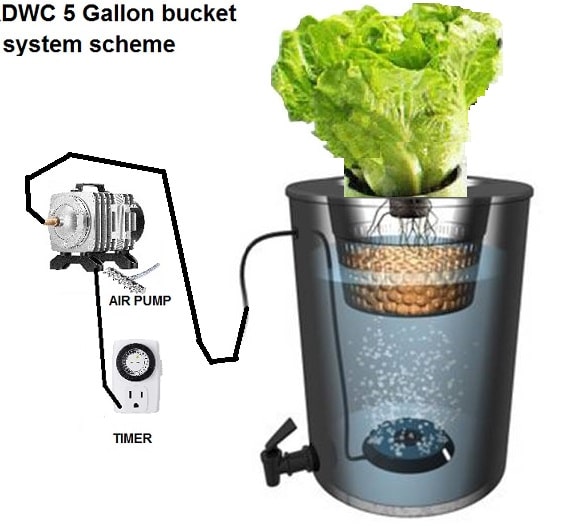
The easiest DWC system contains one bucket. Most such systems do, but you can connect another one. There are lots of advantages to getting such a model. One bucket is better for small plants, but if yours is expected to grow big, the root ball can get as large as the whole bucket, leaving no space for water and nutrients. Besides, you’ll have to move it every time more water with nutrients is needed. The second bucket solves the problem very well.
The additional container will be solely for water and nutrients, and all you will have to do to change the concentration or refresh the water is open the lid of this additional bucket and manipulate the liquid in it. As a result, the plant is still and calm.
Also, I can recommend this article to read about How to Set Up Hydroponic Drip Systems.
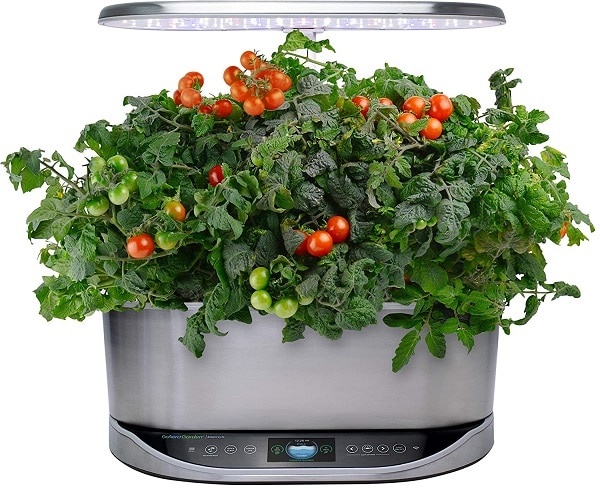 AeroGarden Bounty Elite - Indoor Garden with LED Grow Light
AeroGarden Bounty Elite - Indoor Garden with LED Grow Light
- WiFi and Alexa Compatible, Stainless Steel Grow up to 9 plants, up to 24duim
- Includes everything you need to grow
- 50 watt LED Grow Lights, perfect spectrum for fast growth & big harvests
Besides, if you have to leave for several days, an additional bucket will provide a vital solution to the plant when you’re not able to do so!
Deep Water Culture Aquaponics Vs. Hydroponics
Aquaponics and hydroponics are similar, except for the first one using live fish to enrich the water with nutrients. It’s costlier and requires more sophisticated tech, installation, level of skills, and materials.
Hydroponics is much easier to use; it’s a more beginner-friendly option and requires minimal skill and budget. You’ll have to take care only of the plant but not the fish. The nutrients are directed to the roots using a special solution, which is much easier than using fish for the purpose.
Deep Water Culture Nutrients
To get a bit familiar with the nutrients, you need to know three main terms:
- Micronutrients.
The plants usually need Chloride, Manganese, Zinc, Iron, Boron, Copper, and Molybdenum. They should be mentioned on the nutrients kit you’re going to buy for your DWC system. - Meso-nutrients.
These are secondary macronutrients, including Calcium, Sulfur, and Magnesium. - NPK ratio.
These are the three main elements: Nitrogen, Phosphorus, and Potassium (K). These are primary micronutrients, and their ratio has to be mentioned on the kit you’re going to buy. The optimal ratio is 4 to 3 to 6, representing the percentage of each respective element in the solution.
Making a mixture yourself requires a lot of knowledge and effort. It’s better to buy ready solutions. They have every element your plants will need, in proper proportions.
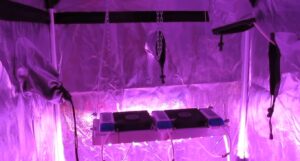
Kind tip: change the solution when needed. Usually, the longevity is about three weeks, but it greatly depends on several factors:
- What plant or plants you’re growing, using the system;
- Their growth stage at the moment when change is needed;
- The scale of your system.
A complete change of water and solution might be difficult labor-wise. The easier way is to add a proper ratio of water and nutrients to maintain the proper ratio in the reservoir. However, the measurements are difficult, so a lot of people choose to change the mixture completely.
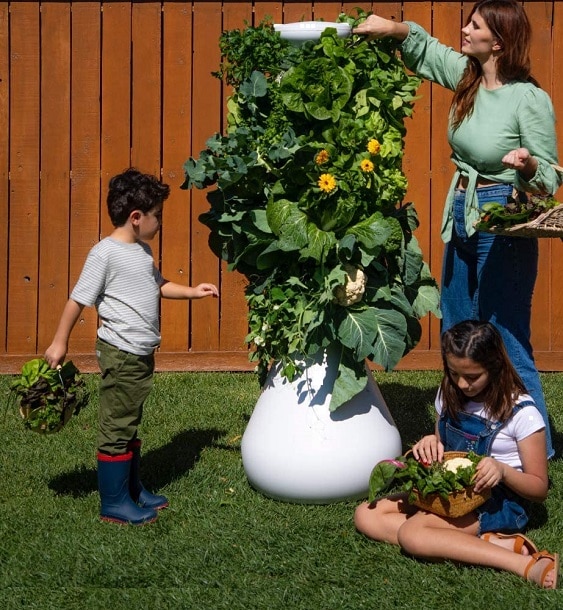 Lettuce Grow 36-Plant Hydroponic Growing System Kit
Lettuce Grow 36-Plant Hydroponic Growing System Kit
- Large Home Organic Gardening with Self Watering with Pump, BPA Free and Food Grade
- Outdoor Indoor Vertical Garden Herb Vegetable Planter Tower
- All the gear: farmstand tower, water pump, power cord, timer; and Nutrients for 130+ Plants
Summarizing
Hydroponics can help you grow food and plants faster and with better results. The systems aren’t very difficult to build, but you have to be knowledgeable. There are lots of types of deep water culture systems, and choosing the most suitable for you is a must-do!
If you’re a beginner, opt for the traditional method or move further to the recirculating system. Make it a hobby, finding out more and more about every method and its use.
But before you go, tell us if you loved the article. Did it answer your questions? Do you have a feeling that you can build your own DWC system? Share your impressions in the comments!
Happy Growing!
